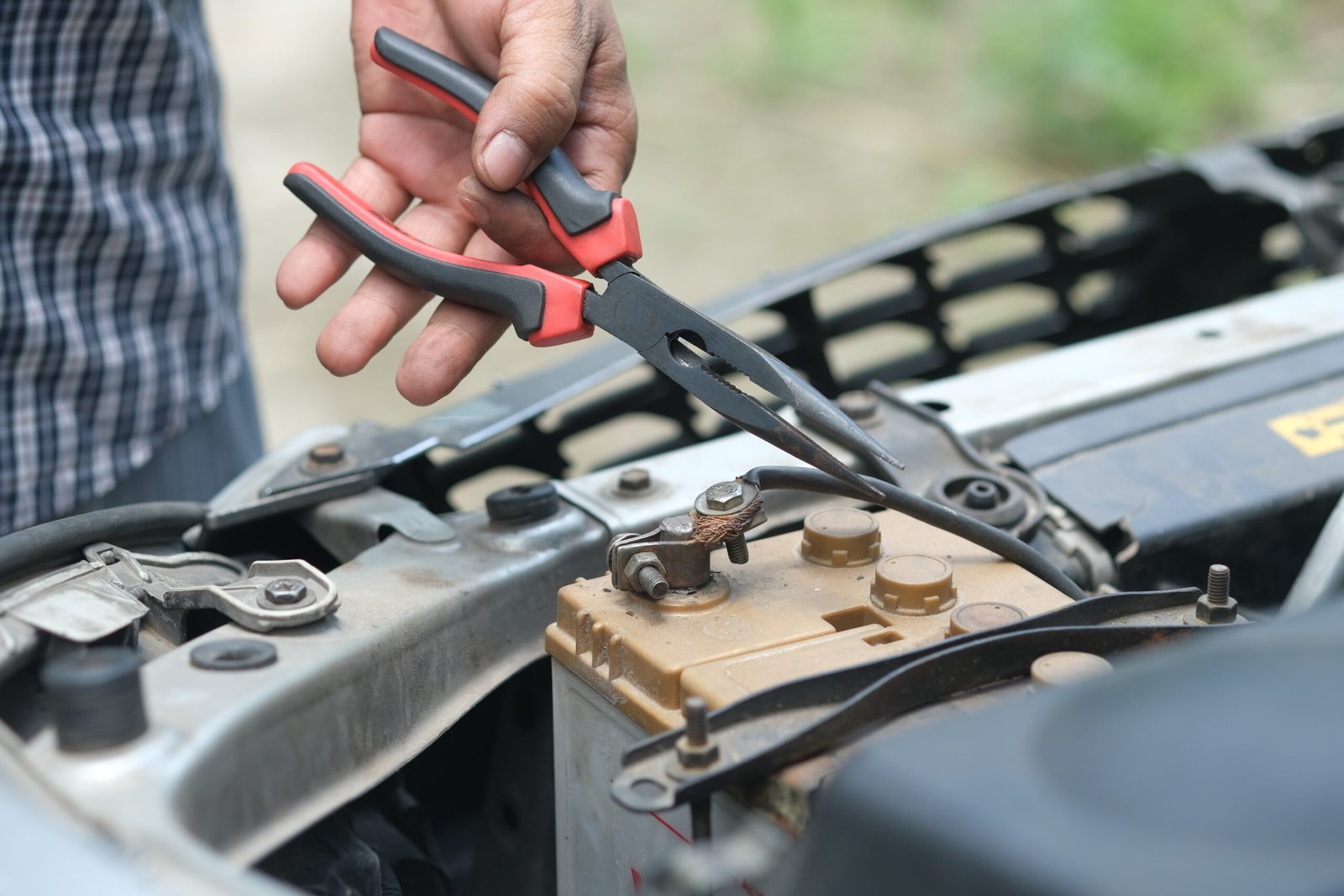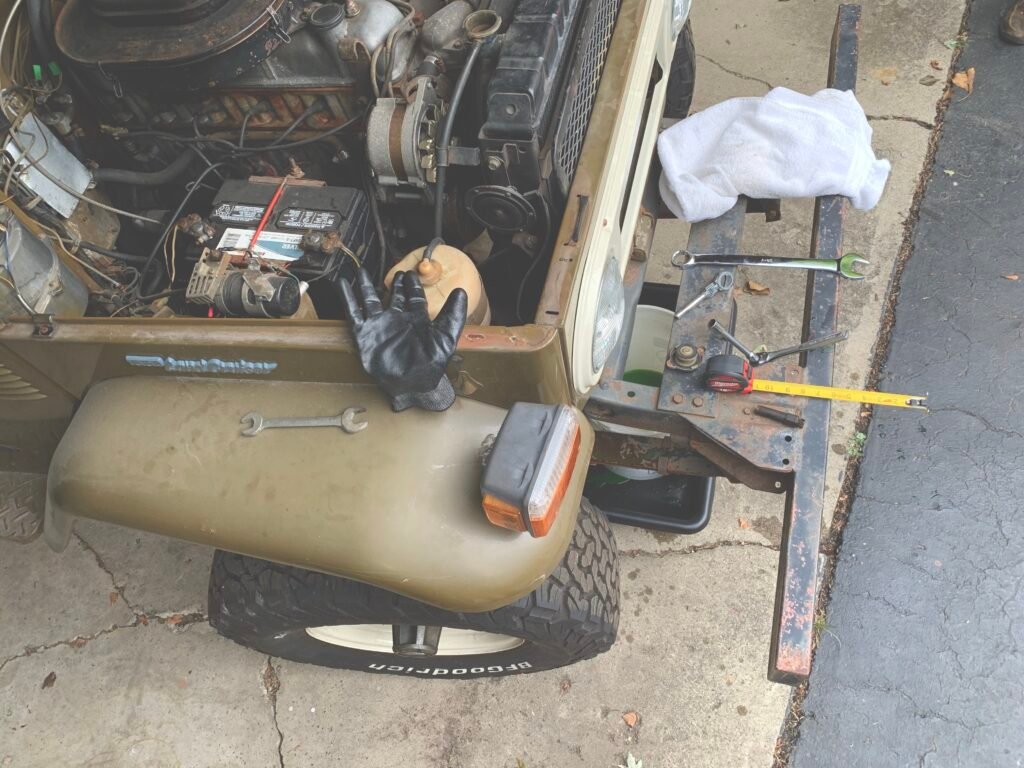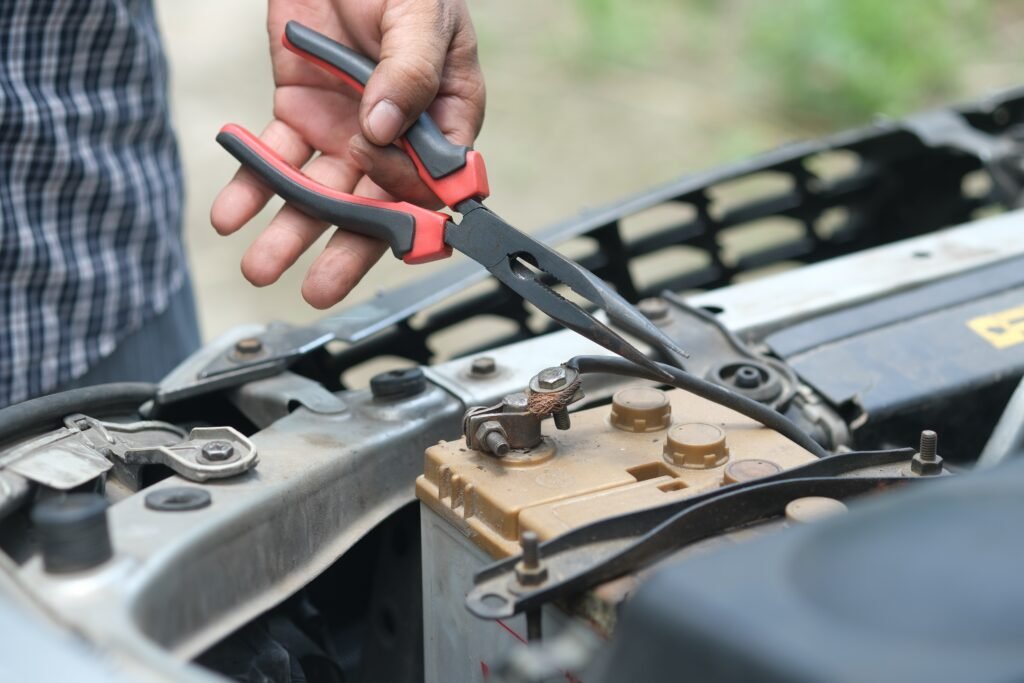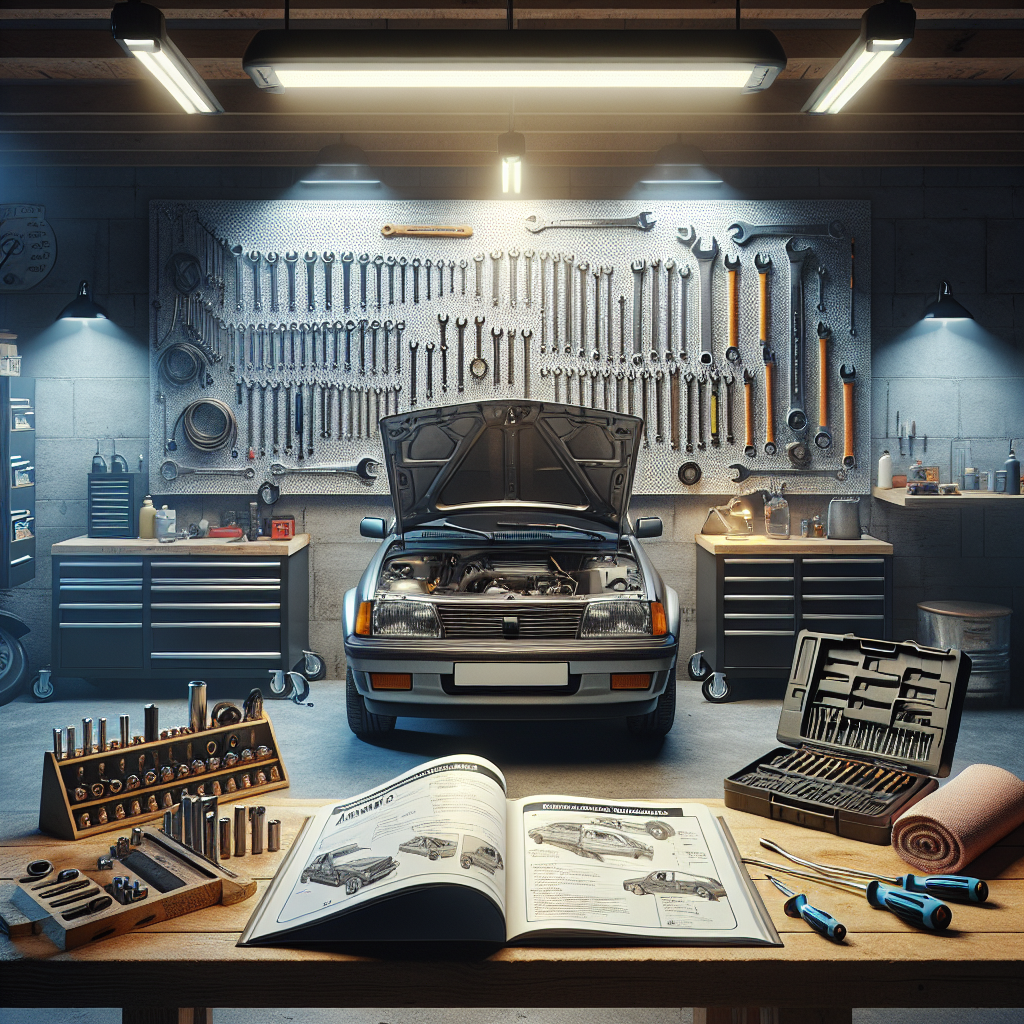
Embarking on the journey of DIY car repairs can be both empowering and cost-effective for you as a beginner. Your thirst for automotive knowledge and a hands-on approach to maintenance is about to get a serious boost with “DIY Car Repairs for Beginners: Essential Tips and Techniques.” This comprehensive guide will be your steadfast companion, helping you navigate through the basics of car repair—from changing your oil to replacing brake pads. You’ll learn how to tackle simple fixes with confidence, ensuring your vehicle stays in top-notch condition while also saving you a trip to the mechanic. So grab your toolbox and get ready to become your car’s best friend!
Understanding Your Car’s Manual
Importance of the owner’s manual
Your car’s owner manual is like a road map for your vehicle’s care and operation. It’s jam-packed with specific information tailored just for your make and model. You’ll find everything from the best type of oil to use to the meaning behind each little light on your dashboard. If you want to keep your car in tip-top shape, consulting this manual is your starting point.
How to interpret symbols and instructions
When you’re flipping through your manual, you’ll notice an array of symbols—each one tells you something different about your car. For instance, a thermometer might indicate something to do with temperature (like engine overheating), while a gas pump symbol is fairly obviously referring to your fuel system. Pay close attention to these icons as they map out instructions, warnings, and important information. They’re straightforward once you get the hang of them.
Keeping track of maintenance schedules
Your owner’s manual comes with a maintenance schedule based on mileage that’s like a cheat sheet for car care. It outlines when to get your oil changed, tires rotated, brake pads checked—you name it. Stay on top of these timelines to keep your vehicle running reliably for years to come.
Essential Tools for DIY Auto Repairs
Basic toolkit must-haves
For the DIY car repair enthusiast, there are a few tools you just can’t do without. Start with the basics: a set of wrenches, screwdrivers, a hammer, pliers, a tire gauge, and a jack with stands. These tools are your bread and butter, ensuring you can tackle the essentials of car repair from changing a tire to tightening loose bolts.
Specialized tools you might need
Depending on the task at hand, you might need to get a bit more specialized. Things like a torque wrench, OBD2 scanner, and a multimeter can be incredibly handy. A torque wrench ensures you tighten bolts to the exact specifications, an OBD2 scanner reads check engine lights and other dashboard notifications, and a multimeter lets you troubleshoot electrical issues with finesse.
Organizing and maintaining your tools
Keeping your tools organized is as important as owning them. It saves time and prevents the frustration of lost tools in the middle of a job. Invest in a sturdy toolbox or organize your workspace with labeled drawers and pegboards. And remember, clean and well-maintained tools last longer – so give them a wipe down after each use and store them in a dry place.

This image is property of images.unsplash.com.
Safety First: Preparing to Work on Your Car
Personal protective equipment (PPE)
Before you pop the hood or slide under your car, gear up with the right PPE. Gloves protect your hands from sharp objects and dirty oil, while safety glasses shield your eyes from debris. If you’re working underneath your vehicle, wear a hard hat to safeguard your head against any potential bumps or falling objects.
Ensuring a safe working environment
Ensure that you’re working on a flat surface to prevent your car from rolling. If you’re jacking up your car, always use jack stands for stability; never rely on the jack alone. Keep your workspace clean and ensure all tools and equipment are within reach to minimize the risk of accidents.
Electrical safety tips
When handling car electronics, disconnect the battery to eliminate the risk of shock or short-circuits. Always remove the negative cable first to reduce the chance of an electrical bridge. Make sure you’re in the dry area to work on electrical components, as wet environments can be hazardous.
Routine Maintenance Tasks
Checking and changing oil
Oil is the lifeblood of your car, keeping the engine lubricated and cool. Check your oil level regularly – typically with every fill-up of gas – to ensure it’s at the correct level and to assess its condition. Oil should be amber in color; if it’s dark or gritty, it’s time for a change. Consult your manual for how often you should change your oil as it varies by vehicle and driving conditions.
Replacing air filters
Your engine breathes through its air filter, and a clogged filter can choke its performance. It’s a straightforward DIY task: locate the filter housing, open it up, take out the dirty filter, and replace it with a shiny new one. Doing this annually can improve your fuel efficiency and help your engine last longer.
Inspecting and maintaining tires
Your tires are your direct connection to the road, so keep them properly inflated to the pressure stated in your owner’s manual or on the tire placard in your doorjamb. Inspect them for even wear and any damage or nails. Rotate them as specified in your maintenance schedule to ensure even wear and extend their life.
Replacing windshield wipers
Don’t let streaky wipers obscure your vision in the rain. Replace your wipers at the first sign of wear or at least once a year. It’s as easy as buying the correct size and clicking the new ones into place. Clear visibility is an essential safety aspect and it’s an affordable and quick fix.

This image is property of images.unsplash.com.
Understanding Car Electronics
Basics of car electrical systems
Your car’s electrical system powers everything from your headlights to your starter motor. It’s all connected via a network of wires and powered by the battery. Understanding the basics helps you diagnose problems like a dead battery or malfunctioning alternator. Keep an eye out for dimming lights and delayed engine starts, as they’re tell-tale signs of electrical issues.
Changing a car battery safely
Changing a battery is heavy lifting and requires caution. Turn off your engine, remove the keys, and start with the negative terminal before the positive to prevent short circuits. Out with the old, in with the new, and then reverse the process to reconnect, starting with the positive terminal.
Replacing headlights and tail lights
You don’t want to get caught in the dark with a burnt-out bulb. Most headlight and tail light replacements require minimal tools – typically a screwdriver to remove the housing. Swap out the old bulb with a new one being careful not to touch the bulb’s glass with your fingers as oils can shorten its lifespan.
Brakes Maintenance and Repair
Checking brake pads and rotors
You rely on your brakes to stop your car reliably, so you can’t ignore their health. Check your pads for wear; if they’re less than 1/4 inch thick, it’s time for a change. Also, inspect your rotors for grooves or scoring — a smooth surface is crucial for proper braking performance.
Bleeding and replacing brake fluid
Hydraulic brake systems rely on brake fluid to transfer force into pressure to stop your car. Bleeding the brakes gets rid of any air bubbles that can compromise braking efficiency. If the fluid is dark or dirty, it may be time for a flush and refill, which is a more advanced task but doable with the right tools and careful attention to procedure.
Common signs of brake issues
Listen for squealing or grinding noises when you brake—these can be harbingers of brake issues. A vibrating steering wheel under braking hints at warped rotors, and a soft or spongy brake pedal suggests a problem with your brake fluid or air in the lines. Don’t take chances with your brakes; if you’re unsure, it’s time for a professional inspection.

This image is property of images.unsplash.com.
Cooling System Care
Flushing the cooling system
Flushing your cooling system is a preventive measure that keeps it running efficiently. Over time, coolant can become acidic and lose its rust-inhibiting properties, potentially leading to overheating. Follow your manual’s schedule for flushing and replacing the coolant to prevent engine damage.
Replacing coolant and thermostat
Coolant keeps your engine at the proper temperature. Always use the type recommended in your owner’s manual and mix it with water as directed. The thermostat is another critical component—it regulates the flow of coolant through your engine. Replacing it typically involves draining the coolant, removing the old thermostat, installing a new one, and then refilling the system.
Identifying leaks and overheating causes
A puddle under your car or a temperature gauge leaning towards “H” are signs of trouble in your cooling system. Leaks can come from the radiator, hoses, or water pump. Overheating can be caused by a failing radiator fan, a clogged radiator, or a broken water pump. Spot these signs early, and you’ll sidestep more extensive damage.
Dealing with the Drive Belt and Chains
Inspecting belts for wear and tear
Drive belts power essential components like the alternator and air conditioning compressor. Check for fraying, cracks, or glazing on the belts. A chirping sound on start-up can also be a red flag. Inspect them regularly and replace as needed to avoid a breakdown—better safe than stuck!
Tension adjustments and replacements
The correct tension on your drive belts is critical. Too tight, and you could wear out bearings; too loose, and the belts might slip. If your car has an automatic tensioner, check its indicator for proper alignment. Otherwise, refer to your manual for how to adjust manually. When it’s time for a replacement, diagram the path before removing the old belt to ensure the new one goes on correctly.
Understanding timing belts/chains maintenance
The timing belt or chain synchronizes your engine’s valves with its pistons. A failure here can cause catastrophic engine damage. Not all cars have a belt—some have a chain, which typically lasts longer. If your car does have a timing belt, follow the replacement schedule in your owner’s manual strictly—it’s an intricate job, but neglect can lead to serious engine trouble.

DIY Bodywork Basics
Treating minor scratches and dents
Let’s face it, scratches and dents happen. For small scratches, a touch-up pen or a bit of polish might do the trick. Larger scratches and dents might require more effort—filling, sanding, and repainting. Take it slow and follow tutorials closely to get a finish that makes your car look cared for.
Preventing and dealing with rust
Rust is cancer for cars. Prevent it by regularly washing and waxing your car, especially after contact with salt during winter months. For small rust spots, sand the area down to bare metal, apply a rust inhibitor, and then touch-up paint. Larger rust issues might require cutting out the rusted section and welding in new metal, which may be a job for the pros.
Simple detailing for improved aesthetics
Detailing your car can make it feel brand new. Wash and wax the exterior, clean the windows inside and out, and take the time to clean the wheels and tires. Inside, vacuum the carpets and upholstery, wipe surfaces with a quality cleaner, and treat leather with a conditioner. It’s not just about looks—regular detailing can preserve your car’s value.
When to Seek Professional Help
Understanding the limits of DIY
While DIY car maintenance and repair can be satisfying and cost-effective, it’s important to recognize its limits. If you’re facing a task that’s beyond your skill level or could compromise your car’s safety—like major engine work or repairing the suspension—it’s time to hand the keys over to a trusted mechanic.
Signs that your car needs a mechanic
Persistent issues after attempted repairs, strange engine noises, or a feeling that something just isn’t “right” are signals it’s time to get professional help. A good rule of thumb: if you’re unsure about any aspect of a repair, consult an expert. An incorrect repair can do more harm than good and end up costing you more in the long run.
Building a relationship with a trusted professional
Finding a trustworthy mechanic can be just as important as having the right tools. Look for someone who treats you with respect, explains issues clearly, and doesn’t pressure you into unnecessary repairs. Establishing a good relationship means you’ll have someone to turn to for those problems that are beyond the reach of your home garage.

